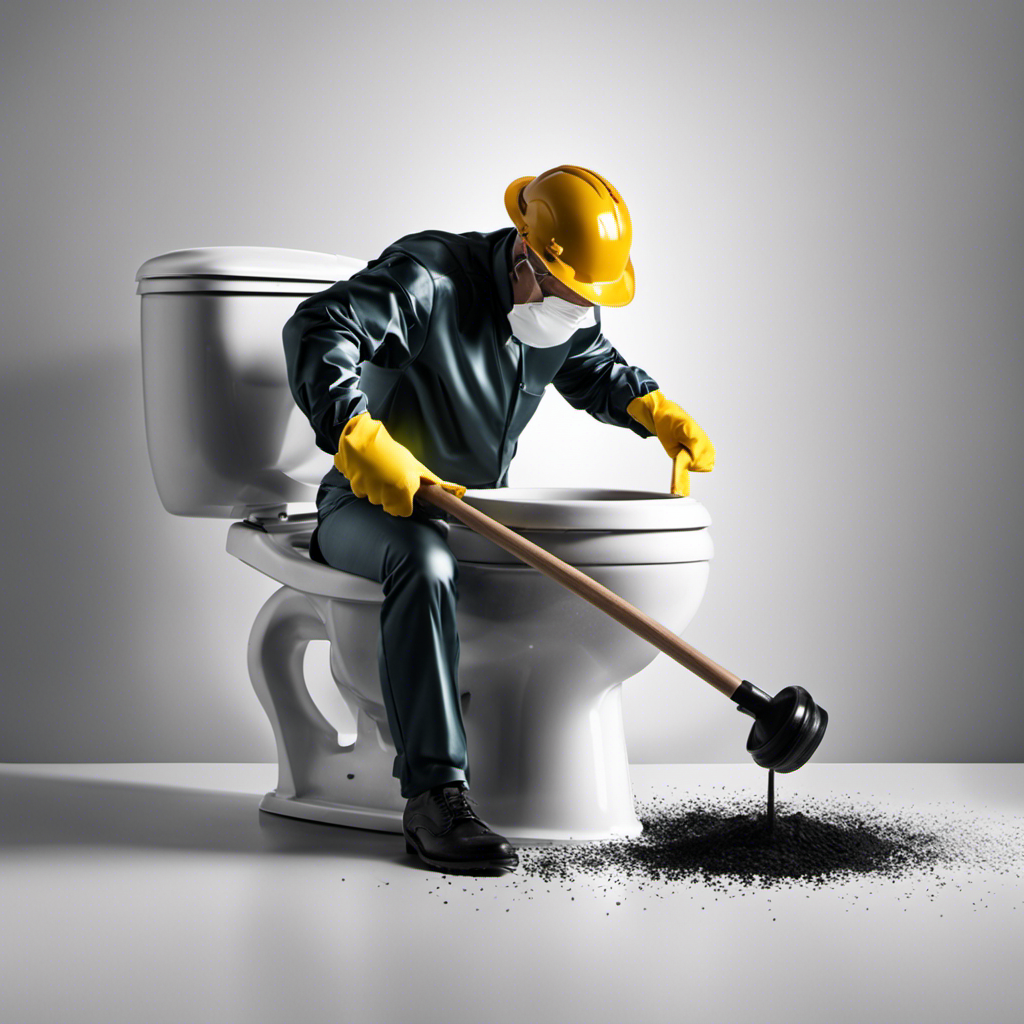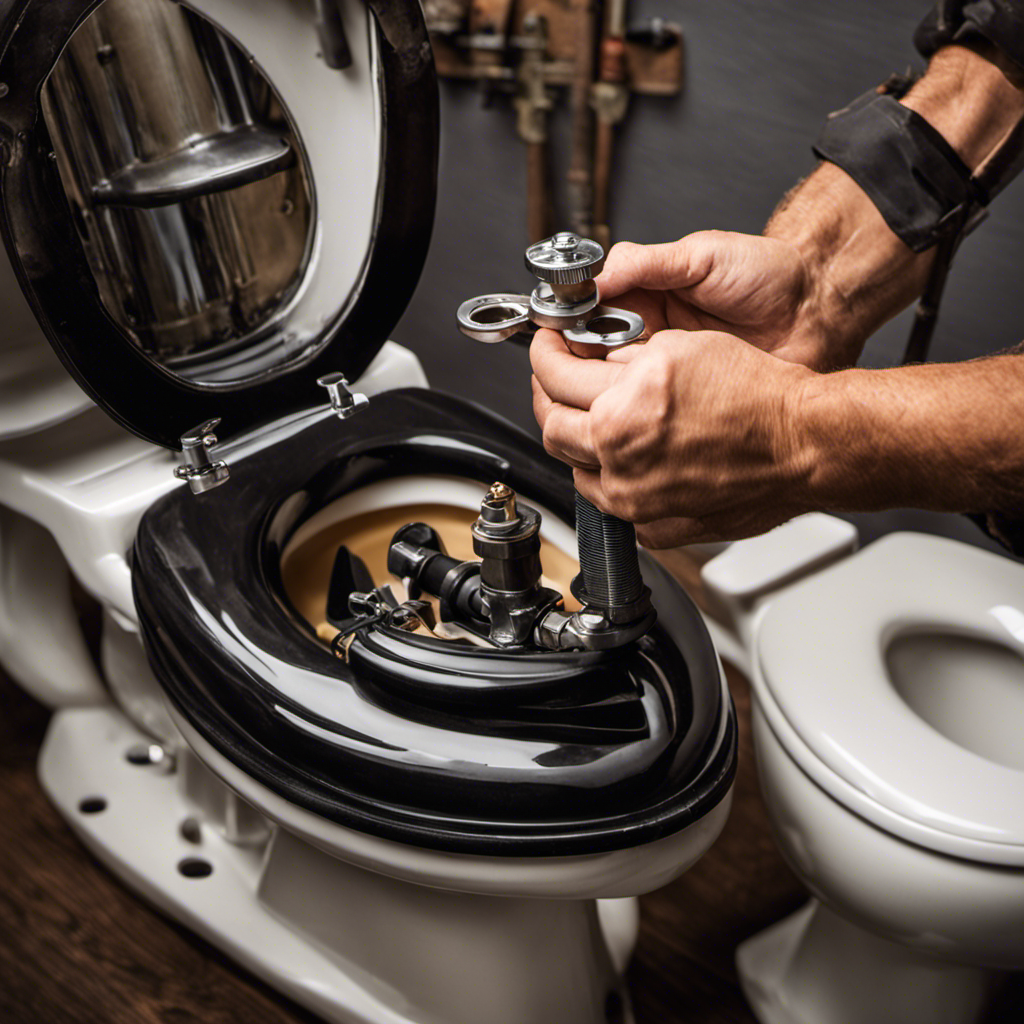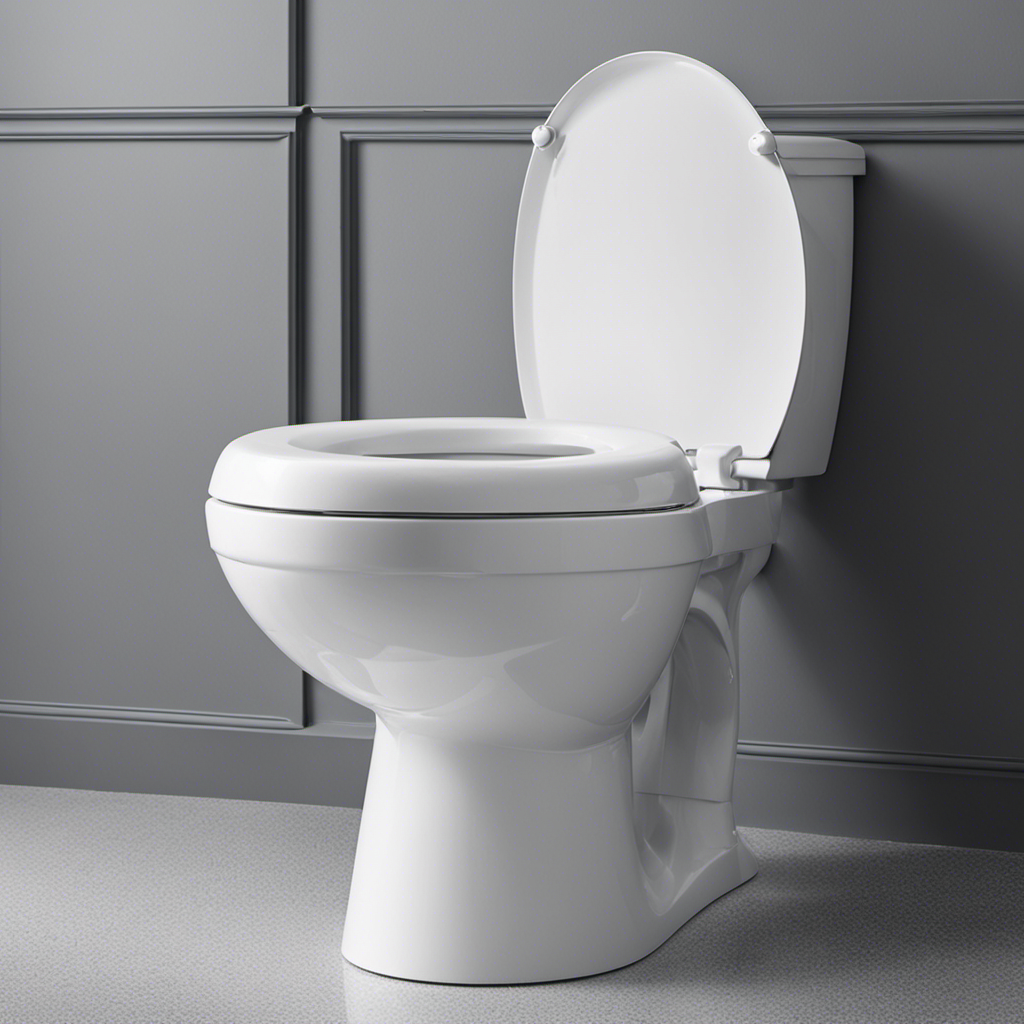Plunging a toilet can be a messy and frustrating task, but fear not! I’m here to share my tried and true method for unclogging a toilet fast with a plunger.
In this informative article, I will guide you through the necessary materials, the correct way to use the plunger, and troubleshoot common issues.
By following these simple steps, you’ll be able to handle any future toilet clogs with ease. So let’s dive in and get that toilet flowing smoothly again!
Key Takeaways
- Choose a flange plunger with a rubber cup for better suction.
- Wear rubber gloves to protect against bacteria and germs.
- Turn off the water supply to prevent overflow.
- Avoid flushing non-flushable items to prevent clogs.
Gathering the Necessary Materials
You’ll need to gather a plunger and a pair of rubber gloves before you can start unclogging the toilet.
When it comes to choosing the right plunger, opt for a flange plunger with a rubber cup that can create a tight seal around the drain. This type of plunger is specifically designed for unclogging toilets and will provide better suction.
As for safety precautions, wearing rubber gloves is essential to protect your hands from any bacteria or germs present in the toilet.
Additionally, make sure to use gentle force when using the plunger to avoid any potential splashing or overflowing of water.
Lastly, always remember to sanitize the plunger and wash your hands thoroughly after completing the task.
Preparing the Toilet for Unclogging
Before getting started, it’s important to make sure the toilet is properly prepared for the unclogging process.
To begin, let’s consider some common causes of toilet clogs. One frequent culprit is excessive toilet paper usage, which can create a blockage in the pipes. Another common cause is flushing non-flushable items such as wipes, feminine hygiene products, or excessive amounts of hair.
Once you have identified the cause, it’s time to prepare the toilet for unclogging. Start by turning off the water supply to prevent any overflow. Next, grab a plunger and ensure a tight seal with the drain hole. Apply firm, downward pressure and create a suction motion to dislodge the clog. Repeat this process several times if necessary, and always remember to keep safety in mind.
Using the Plunger Correctly
Once the water supply is turned off, it’s important to create a tight seal with the plunger to effectively dislodge the clog. Here’s how to use the plunger correctly:
-
Position the plunger: Place the plunger over the drain hole in the toilet bowl, making sure it covers the entire area.
-
Create suction: Press the plunger down firmly to create a seal. Then, push and pull the plunger vigorously, maintaining the seal, to create suction and dislodge the clog.
-
Be patient: Repeat the plunging motion several times, applying steady pressure. It may take a few attempts before the clog is fully cleared.
-
Maintain the plunger: After using the plunger, rinse it with hot water to remove any residue. Store it in a clean, dry place to prevent contamination.
While the plunger is the most common tool for unclogging a toilet, there are alternative methods like using a toilet auger or a chemical drain cleaner. However, it’s important to note that these methods may require more skill or pose potential risks, so it’s best to consult a professional if you’re unsure.
Regular plunger maintenance will keep it in good working condition and ready for any future clogs.
Troubleshooting Common Issues
If the water is not draining properly, it could be due to a blockage in the pipes. Troubleshooting techniques can help identify and resolve the common causes of drainage issues.
One possible cause is a clogged toilet trap. This can be cleared by using a plunger to create pressure and dislodge the blockage.
Another common cause is a blocked vent pipe. This can be resolved by checking the roof vent for any debris or obstructions.
If the problem persists, it may be necessary to use a plumbing snake to remove the blockage from the pipes.
Additionally, improper flushing habits, such as flushing large amounts of toilet paper or non-flushable items, can lead to clogs.
Preventing Future Clogs
To prevent future clogs, it’s important to be mindful of what you flush down the toilet. Here are four key tips to help you maintain a clog-free toilet:
-
Regular maintenance: Make it a habit to perform regular maintenance on your toilet. This includes inspecting the tank and bowl for any signs of damage or leaks, as well as checking the flushing mechanism to ensure it is working properly.
-
Proper toilet paper usage: It’s crucial to use toilet paper that is designed to break down easily in water. Avoid using excessive amounts of toilet paper or flushing items such as wipes, paper towels, or feminine hygiene products, as these can cause clogs.
-
Be cautious with foreign objects: Do not flush any foreign objects down the toilet, as they can easily get stuck in the pipes and cause clogs. This includes items like cotton swabs, dental floss, or small toys.
-
Educate household members: Teach everyone in your household about proper toilet usage and what should and should not be flushed. This will help prevent accidental flushing of items that can cause clogs.
Following these tips will help you maintain a smoothly functioning toilet and prevent future clogs.
Frequently Asked Questions
Can I Use Any Type of Plunger to Unclog a Toilet?
Yes, you can use different types of plungers to unclog a toilet. Each type has its pros and cons. It’s important to choose the right one for your specific situation to ensure effective and fast unclogging.
Is It Necessary to Wear Gloves When Unclogging a Toilet?
Wearing gloves while unclogging a toilet has pros and cons. They provide protection from germs and bacteria, but can hinder grip and sensitivity. Common mistakes to avoid include using excessive force and not properly sealing the plunger.
Can I Use Chemical Drain Cleaners Before Using a Plunger?
Using chemical drain cleaners before using a plunger can be effective, but be cautious of the potential harm to pipes and the environment. Alternatives like a toilet auger or natural remedies may also be worth considering.
What Should I Do if the Toilet Continues to Overflow While Using a Plunger?
If the toilet continues to overflow while using a plunger, I would first turn off the water supply valve behind the toilet. Then, I would try using a toilet auger or calling a plumber for assistance.
How Often Should I Clean My Toilet to Prevent Future Clogs?
To prevent future toilet clogs, it is important to clean your toilet regularly. How often should I clean my toilet? It is recommended to clean it at least once a week to avoid clogs.
Conclusion
In conclusion, unclogging a toilet with a plunger is a quick and effective solution to a common household problem. By following the steps outlined in this article, you can easily fix a clogged toilet and prevent future clogs.
Remember, prevention is key, so be mindful of what you flush down the toilet. Don’t let your toilet become a ‘clog monster’ lurking in the shadows, waiting to strike.
Take charge, grab your plunger, and conquer any clog that comes your way.










